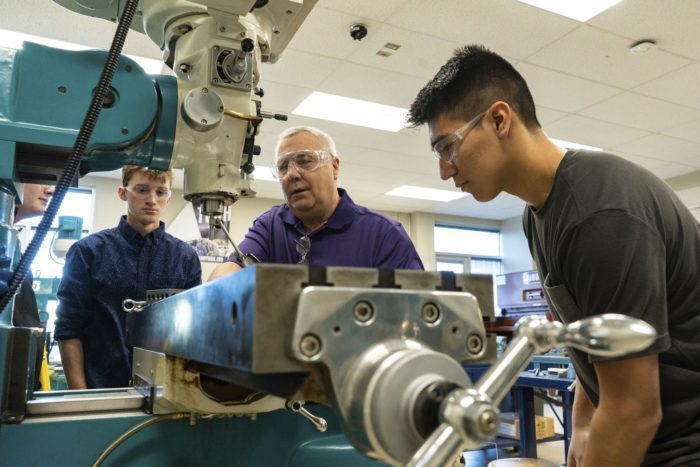
Note: This op-ed was originally published in Summer 2019 issue of Direct, WSSDA’s quarterly collection of inspiring stories, news, and updates from around the state.
How do we nurture students’ interests and prepare them for success in a rapidly evolving workforce? In Yakima’s West Valley School District, we work intentionally to answer those questions and open opportunity-rich career pathways for students.
Aerospace manufacturing is one of those pathways.
There are nearly 300,000 manufacturing workers in Washington state, and a large percentage of whom are ready to retire. Recognizing that the door is opening to the next generation, we began developing a robust high school manufacturing program five years ago. We started by asking what curriculum would best prepare students for direct entry into high-paying jobs and postsecondary programs. The answer was Core Plus Aerospace.
Developed and supported by Boeing, Core Plus Aerospace is a hands-on curriculum that delivers real-world skills. It starts with foundational skills common to all manufacturing, such as precision measurement, materials science, and use of hand and power tools. Deeper into the curriculum, students engage in aerospace-specific content in areas like fiber optics and advanced composites.
The curriculum was designed with high school students in mind and is deployed in 40 high schools and skills centers across the state. Our early experience told us that also giving junior high students access to Core Plus Aerospace would reap invaluable benefits in encouraging career exploration. To that end, we deployed 90 hours of the curriculum in both seventh and eighth grade. Our seventh graders take AMPED (Algebra 1 in Manufacturing Processes, Entrepreneurship and Design) while our eighth graders learn about material sciences and green energy.
Our high school program builds on that early exposure through a three-hour-a-day machining class. Students can earn CTE, English, science, and third-year math credits. They learn and apply knowledge in mechanics, mathematics, metal properties, layout, and machining. They learn by doing, figuring out why and how things work, and developing life skills like teamwork and time management.
High school students who successfully complete the 540 hours of Core Plus Aerospace coursework are eligible to apply for our AJAC aerospace apprenticeship, which can give them 2,000+ hours toward a journeyman certification.
We’ve seen growing interest and strong results since launching our manufacturing program and the post-high school opportunities for our graduates are many. About a third of our graduates take their skills directly into the workforce. Many are recruited by companies like Boeing, Cub Crafters, and Pexco Aerospace. A third of our students go on to two-year colleges. A third pursue four-year degrees in engineering and other fields.
Four pieces of advice for school directors and districts interested in developing a manufacturing pathway:
- Visit one. Come see our program or visit another Core Plus Aerospace partner school.
- Partner with industry. Understanding local employer needs, leveraging their expertise, and building employer trust in how we educate students will pay off for years to come.
- Tap into available resources.The legislature recently doubled down on its support for Core Plus, appropriating $1.3 million annually for the start-up, expansion, and maintenance of high school manufacturing programs. These resources are available to help you start, support and grow your program. OSPI can provide guidance based on models already deployed
- Encourage professional development. Our manufacturing teachers take part in all professional development opportunities associated with Core Plus Aerospace. This includes classroom and hands-on instruction as well as opportunities to train at Boeing.
Most importantly, encourage both exploration and preparation among your students. Talk with parents and engage your community. Those conversations are essential to identifying and preparing young people for the array of rewarding opportunities that await.
Chris Nesmith is the director of innovation for the West Valley School District, which serves 5,500 students. More information is available at wvfutures.org and coreplusaerospace.org.

